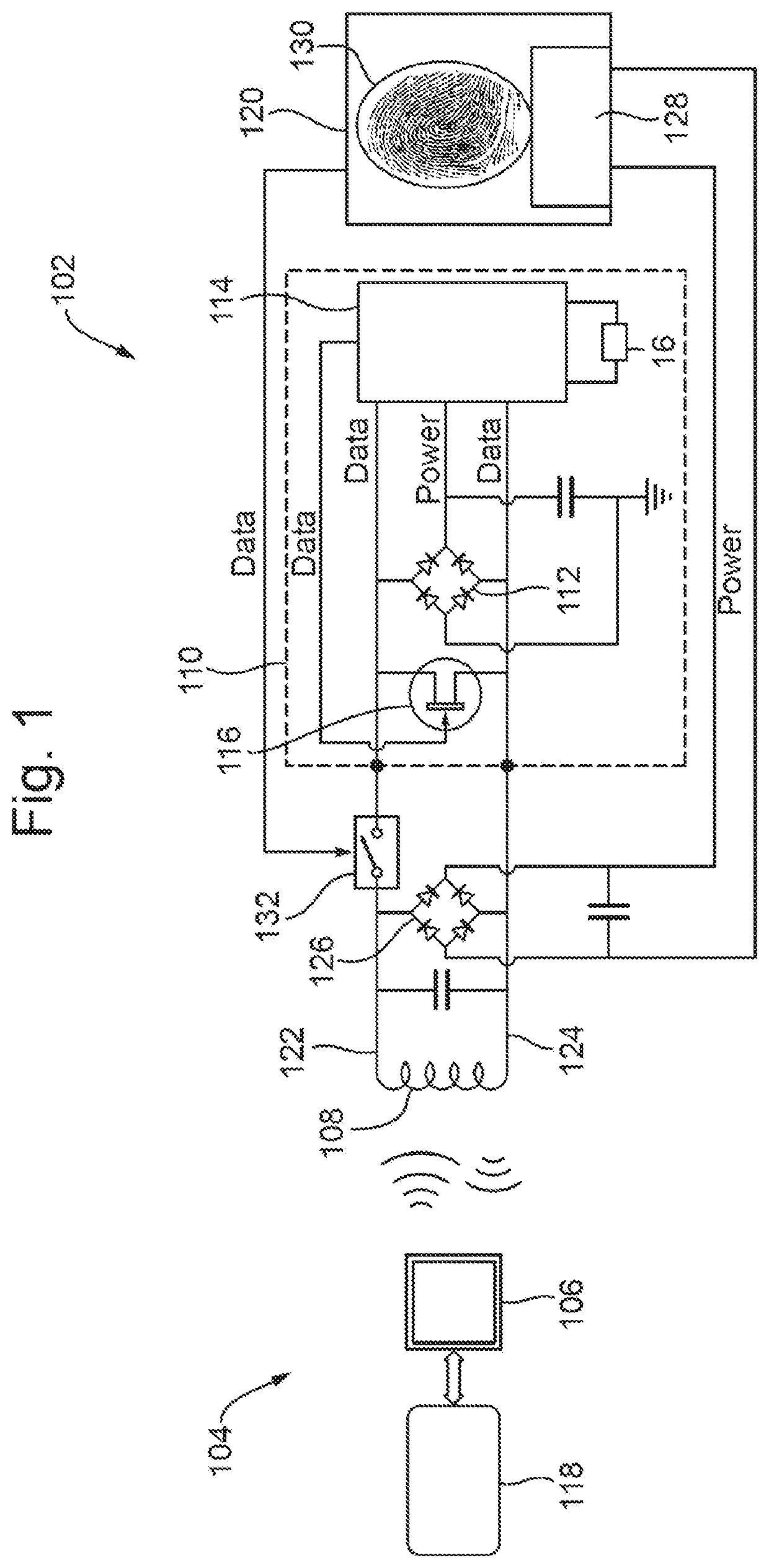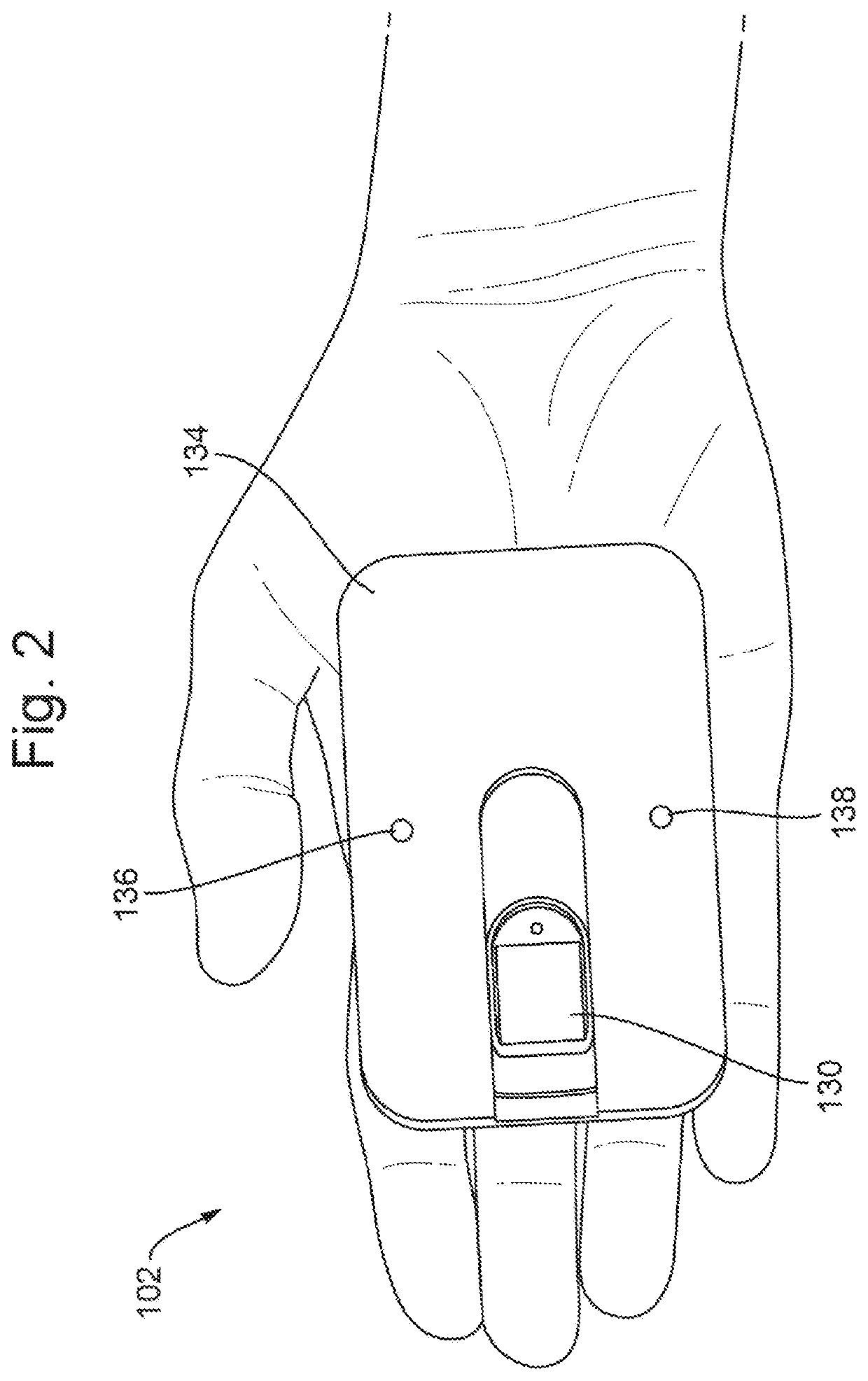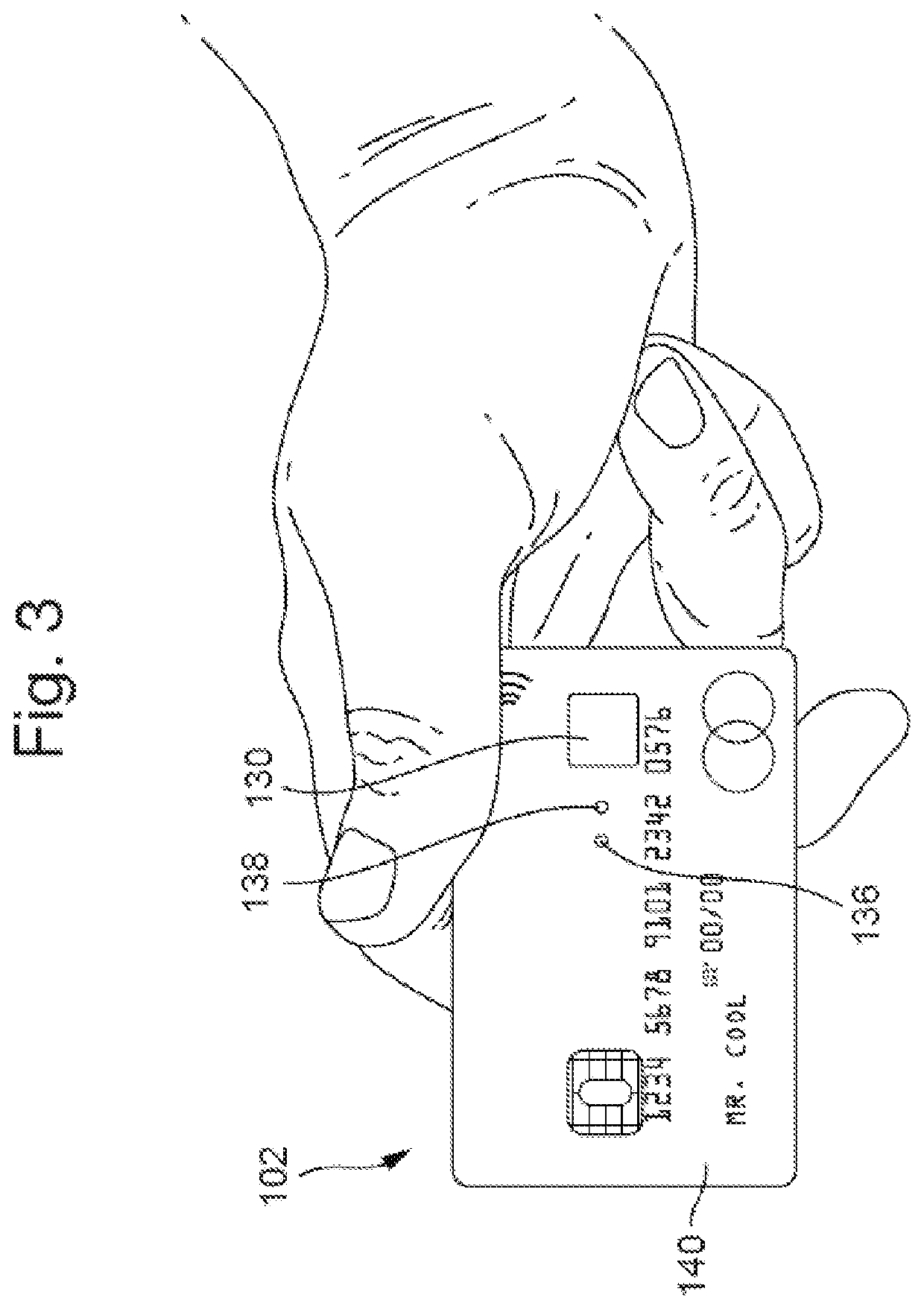Fingerprint authorisable device
a fingerprint authorisation and fingerprint technology, applied in the field of fingerprint authorisation devices, can solve the problems of user's fingerprint being damaged by injury, not being able to operate, and not being able to authorise fingerprints, etc., and achieve the effect of enhancing security
- Summary
- Abstract
- Description
- Claims
- Application Information
AI Technical Summary
Benefits of technology
Problems solved by technology
Method used
Image
Examples
Embodiment Construction
[0068]By way of example the invention is described in the context of a fingerprint authorised smartcard that includes contactless technology and uses power harvested from the card reader. These features are envisaged to be advantageous features of one application of the proposed fingerprint failure feature, but are not seen as essential features. The smartcard may hence alternatively use a physical contact and / or include a battery providing internal power, for example. The fingerprint failure feature can also be implemented with appropriate modifications in any other device or system that uses fingerprint authorisation.
[0069]FIG. 1 shows the architecture of a smartcard 102 that is provided with the proposed fingerprint failure feature. A powered card reader 104 transmits a signal via an antenna 106. The signal is typically 13.56 MHz for MIFARE® and DESFire® systems, manufactured by NXP Semiconductors, but may be 125 kHz for lower frequency PROX® products, manufactured by HID Global ...
PUM
 Login to View More
Login to View More Abstract
Description
Claims
Application Information
 Login to View More
Login to View More - R&D
- Intellectual Property
- Life Sciences
- Materials
- Tech Scout
- Unparalleled Data Quality
- Higher Quality Content
- 60% Fewer Hallucinations
Browse by: Latest US Patents, China's latest patents, Technical Efficacy Thesaurus, Application Domain, Technology Topic, Popular Technical Reports.
© 2025 PatSnap. All rights reserved.Legal|Privacy policy|Modern Slavery Act Transparency Statement|Sitemap|About US| Contact US: help@patsnap.com



